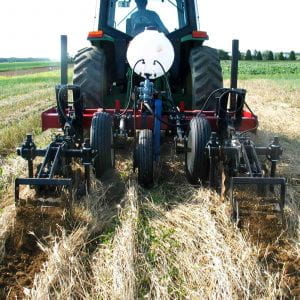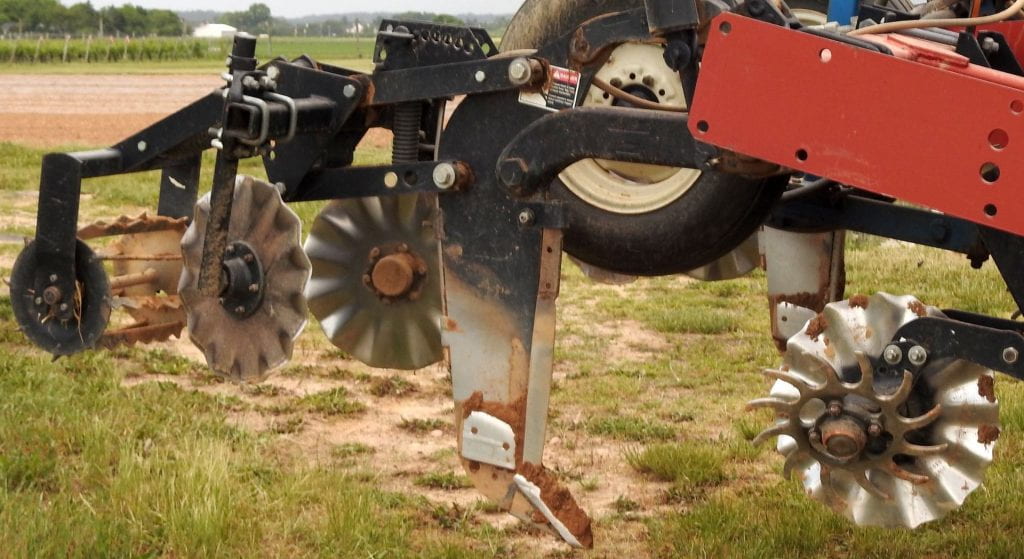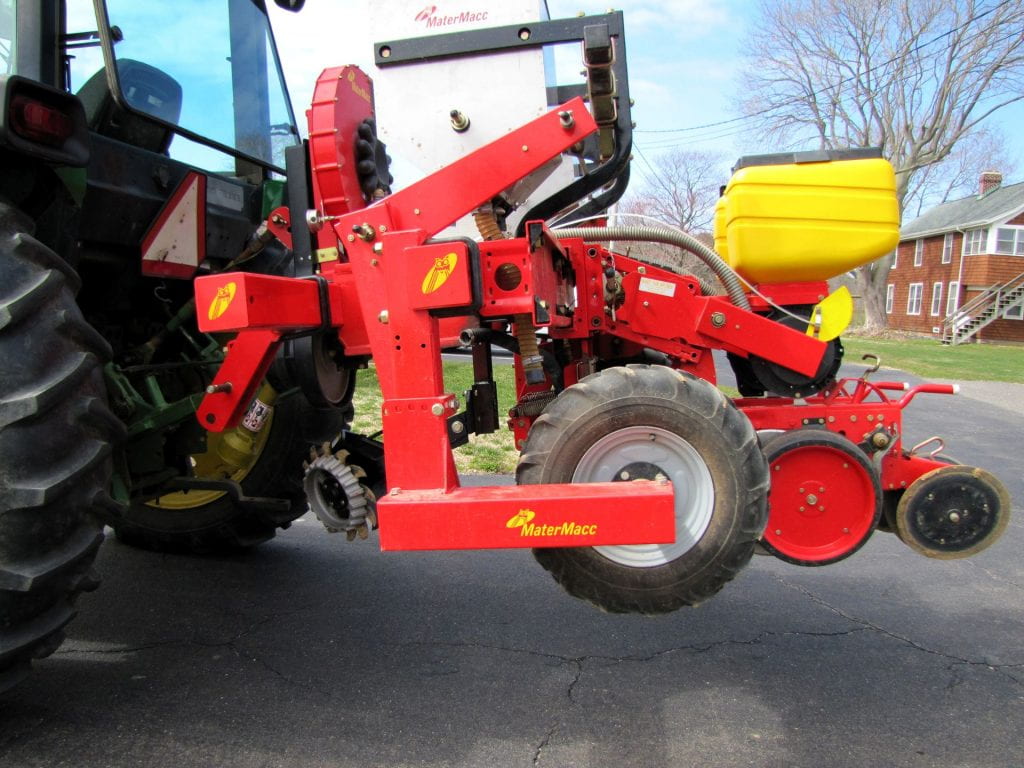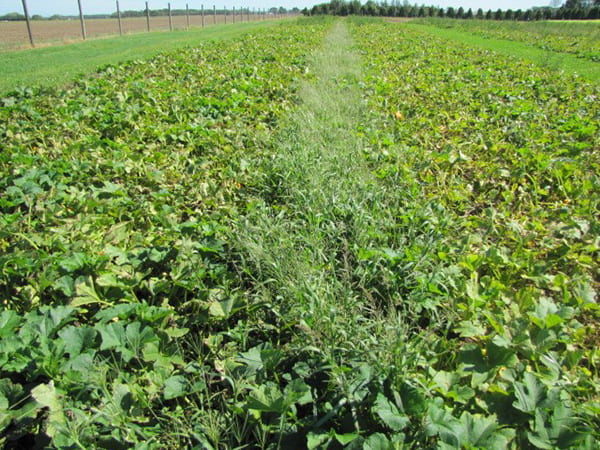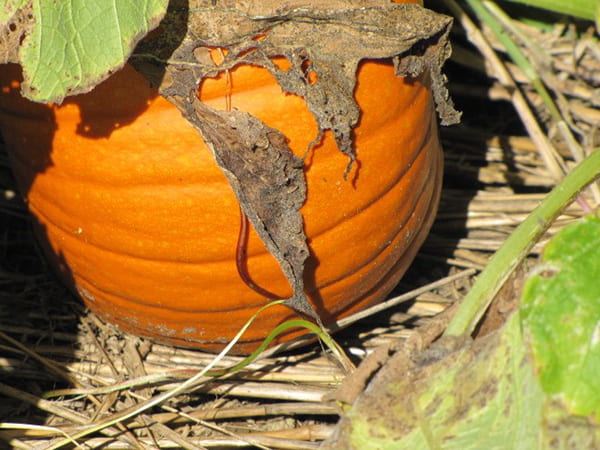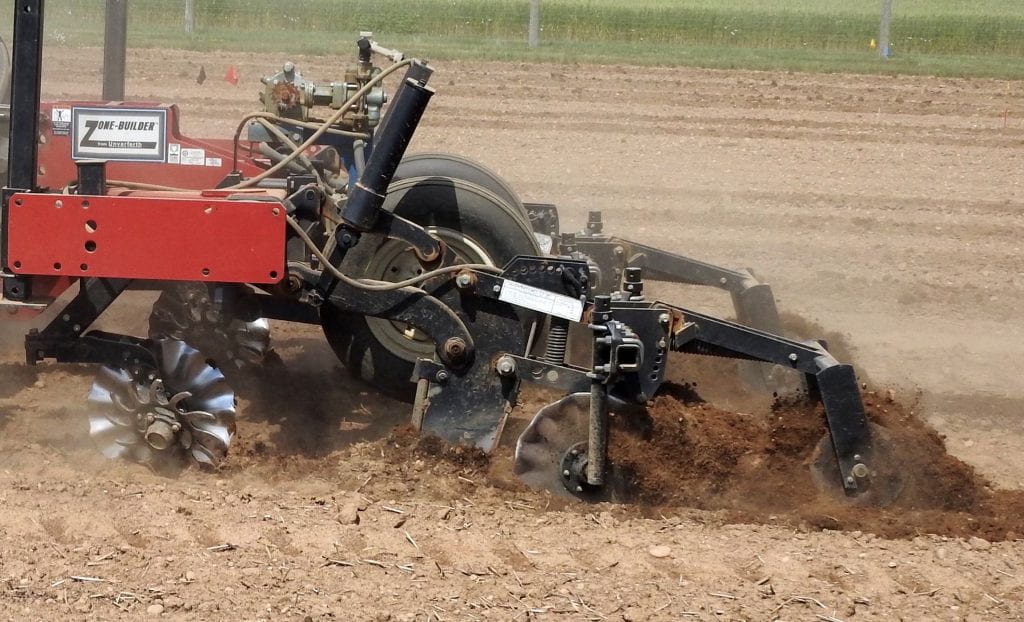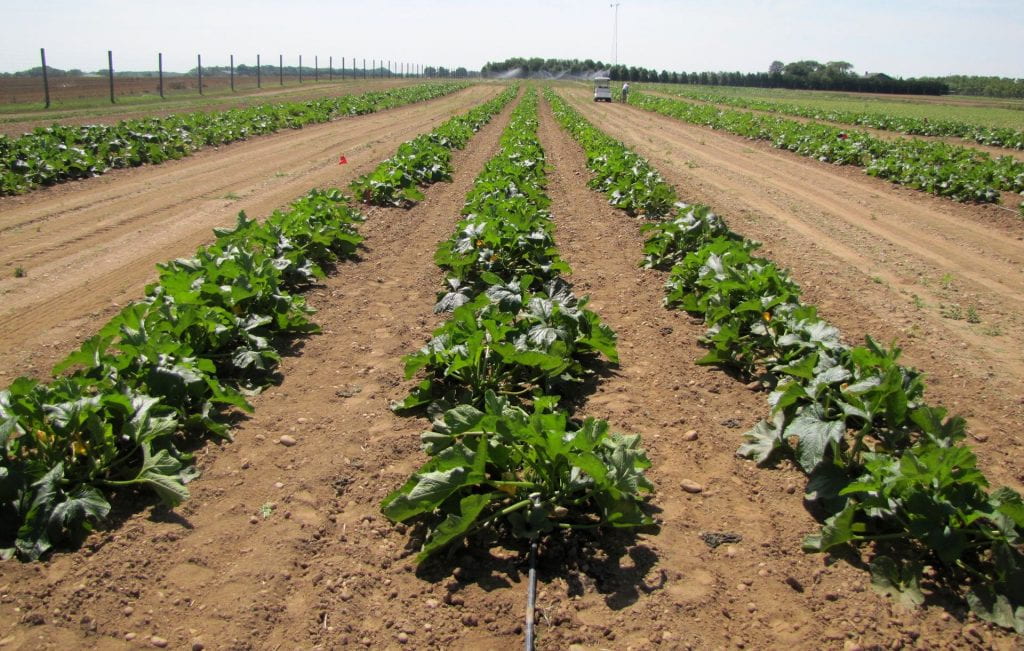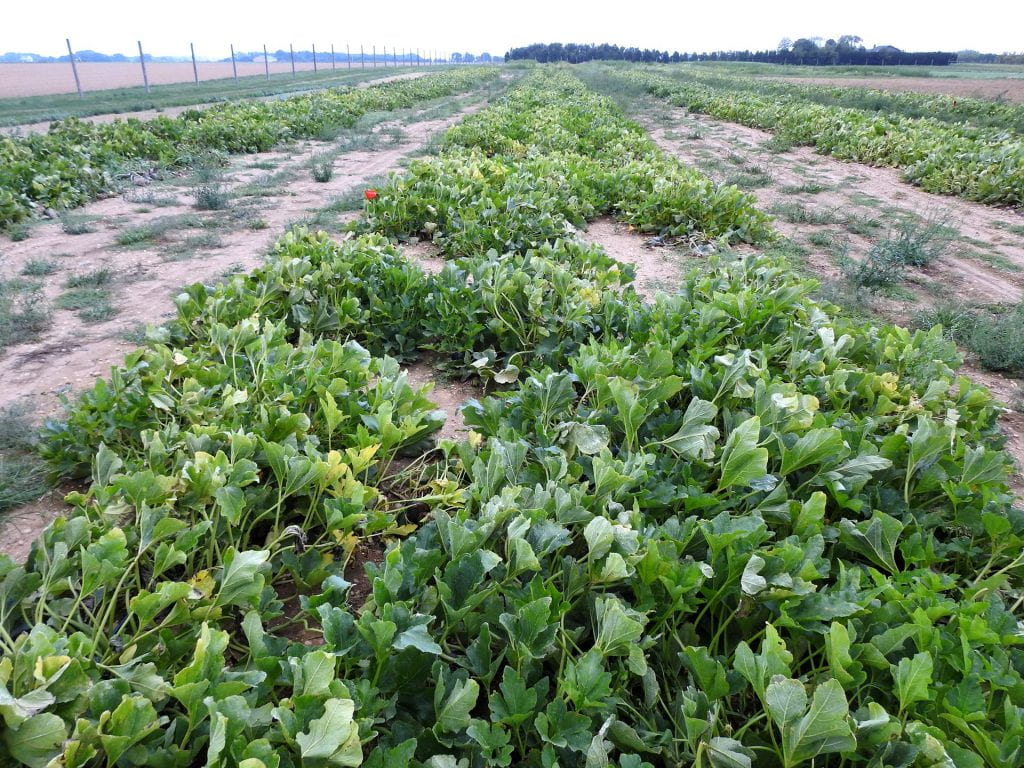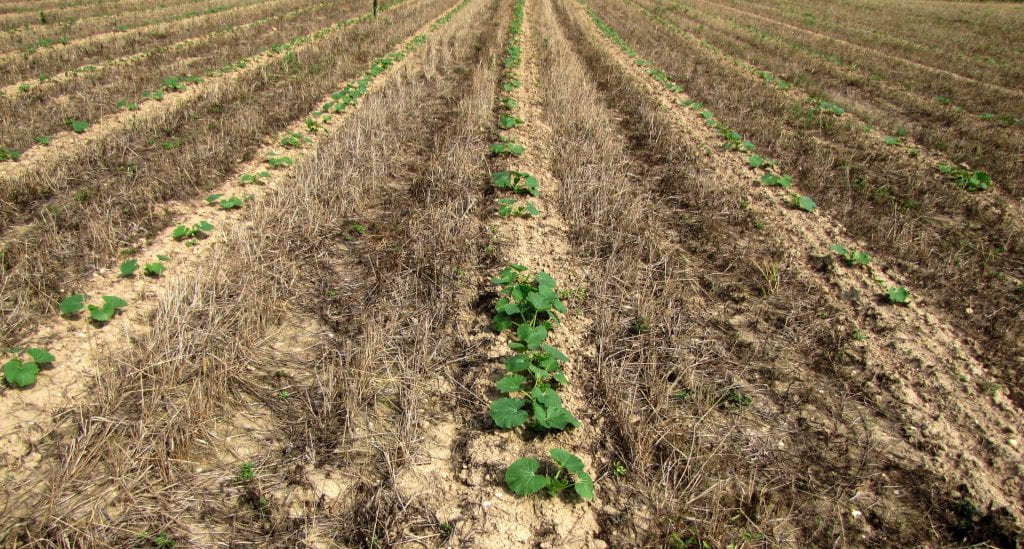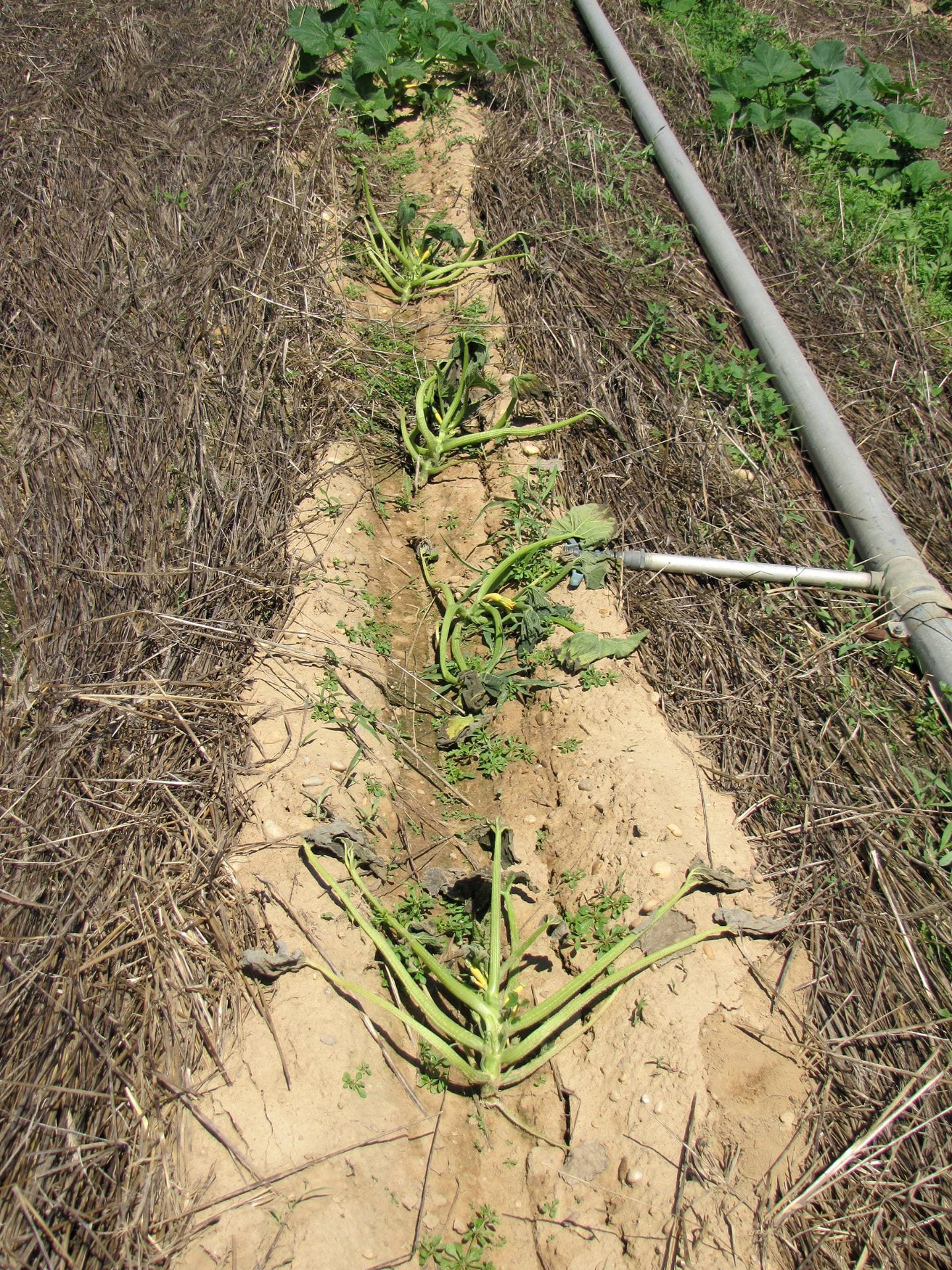There has been increasing interest in methods to reduce tillage recognizing its detrimental impacts on soil health. Resulting soil health benefits, in particular improved soil water infiltration and increased microbial activity, are expected to suppress soil-borne pathogens, in particular Phytophthora capsici, which causes Phytophthora blight in cucurbits and several other vegetable crops. Deep zone strip tillage is a type of reduced tillage that researchers and subsequently vegetable growers in the Northeast have been using primarily to manage Phytophthora blight and improve soil health mostly for pumpkin and winter squash. Reduced tillage does not need to be implemented for growing the crop targeted for the benefits in order to achieve them. It can be used for growing a preceding crop in the field rotation. Sweet corn is one crop in particular that does well produced with reduced tillage.
Deep zone strip tillage is the type of reduced tillage researched at LIHREC in Riverhead. A 2-row Unverferth zone builder was used. For each row this piece of equipment has a 20-inch coulter to open the row, shank to disrupt plow pans and create compression fissures between the shanks and 2 17-inch wavy coulters followed by a 15-inch wide rolling basket to prepare the soil for planting. Row cleaners were added before the first coulter to move rye straw out of the strip being tilled. Rye was seeded the previous fall at a high rate (4.5 bu/A) with fertilizer when needed. When the rye was pollinating (mid-May to early June), it was rolled with a cultipacker twice, then sprayed with RoundUp herbicide. Pumpkins were seeded 1 to 2 weeks later with a standard vacuum seeder for tilled soil (not a no-till seeder). This delay allows soil settling. Row cleaners were added to the seeder to push rye straw out of the seeded row.
Fertilizer application needs to be adjusted when tillage was being used to incorporate fertilizer in conventionally-grown crops. In the first few years of research at LIHREC, which was started in 2004, liquid fertilizer was injected into the soil with the zone builder. Then we switched to controlled release fertilizer put down during seeding in bands on both sides of the seeded row, about 2 inches from the seed. With controlled release fertilizer, total amount needed (adjusted for area treated) can be applied at planting without risk of damaging seedlings as can occur with standard soluble fertilizer.
Managing weeds can be more difficult in strip-tilled than conventionally-tilled fields because straw can interfere with herbicide reaching soil. It helps to use high rates and irrigate promptly to move herbicide to soil and activate it. Also applying a broad-spectrum herbicide like Round-Up manages weeds between strips and those that germinated in the strips after zone building. The research field at LIHREC dedicated to studying reduced tillage has 4 pairs of 20-ft-wide plots extending the length of the field (300 ft) managed every year with reduced or conventional tillage; a few years the field has been fallow. When conditions were favorable for Phytophthora blight (high soil moisture), less fruit developed fruit rot in the reduced-till plots.
Growers have used reduced tillage for producing pumpkin, winter squash, cucumber, snap beans, cabbage, sweet corn, and sunflower. Where reduced tillage is used to manage Phytophthora blight in a field with a slope, it is best to orient rows across the slope. In a field where rows were parallel to the slope, the way blight developed it appeared that the pathogen had been moved in water that ran down the tilled strip. One grower added a second rolling basket to his Unverferth zone builder to improve the seedbed. Using reduced tillage to produce crops like sweet corn have been observed to be associated with less Phytophthora blight in susceptible crops grown subsequently with conventional tillage compared to susceptible crops in other fields on the farm where all crops in rotation were grown with conventional tillage.
Please Note: Any reference to commercial products, trade or brand names is for information only; no endorsement is intended.
Below: Equipment used at LIHREC for reduced tillage crop production include an Unverferth zone builder with row cleaners added next to the first coulter. Row cleaners were added to the seeder, which is a standard vacuum seeder for tilled ground.
Below: Pumpkin, winter squash and sweet corn have been seeded after zone building into winter rye seeded at high rate and killed in pollination stage by applying RoundUp herbicide, which also managed weeds, and rolling. The straw mulch remained all season. Additional herbicides were applied at planting to achieve good weed control. Reduced tillage was used in the left side of the field photograph while the right side was conventionally tilled. In the video one rolling basket was replaced with a cultipacker.
Thick straw mulch is not an essential component. Photos below are of reduced tillage done in a winter-killed oats (100 lb/A) and purple forage peas (50 lb/A) cover crop for growing acorn squash organically. Weeds were managed with shallow cultivation before transplanting and as needed during the season plus hand-weeding in rows.
Strip tilled kaboucha squash planting at a farm on Long Island.
It is important to make sure the equipment does not leave a trough when strip tillage is done because water can pool there following rain or irrigation thereby creating favorable conditions for development of Phytophthora blight.
More information/prepared by:
Margaret Tuttle McGrath
Associate Professor Emeritus
Long Island Horticultural Research and Extension Center (LIHREC)
Plant Pathology and Plant-Microbe Biology Section
School of Integrative Plant Science
College of Agriculture and Life Sciences
Cornell University
mtm3@cornell.edu



